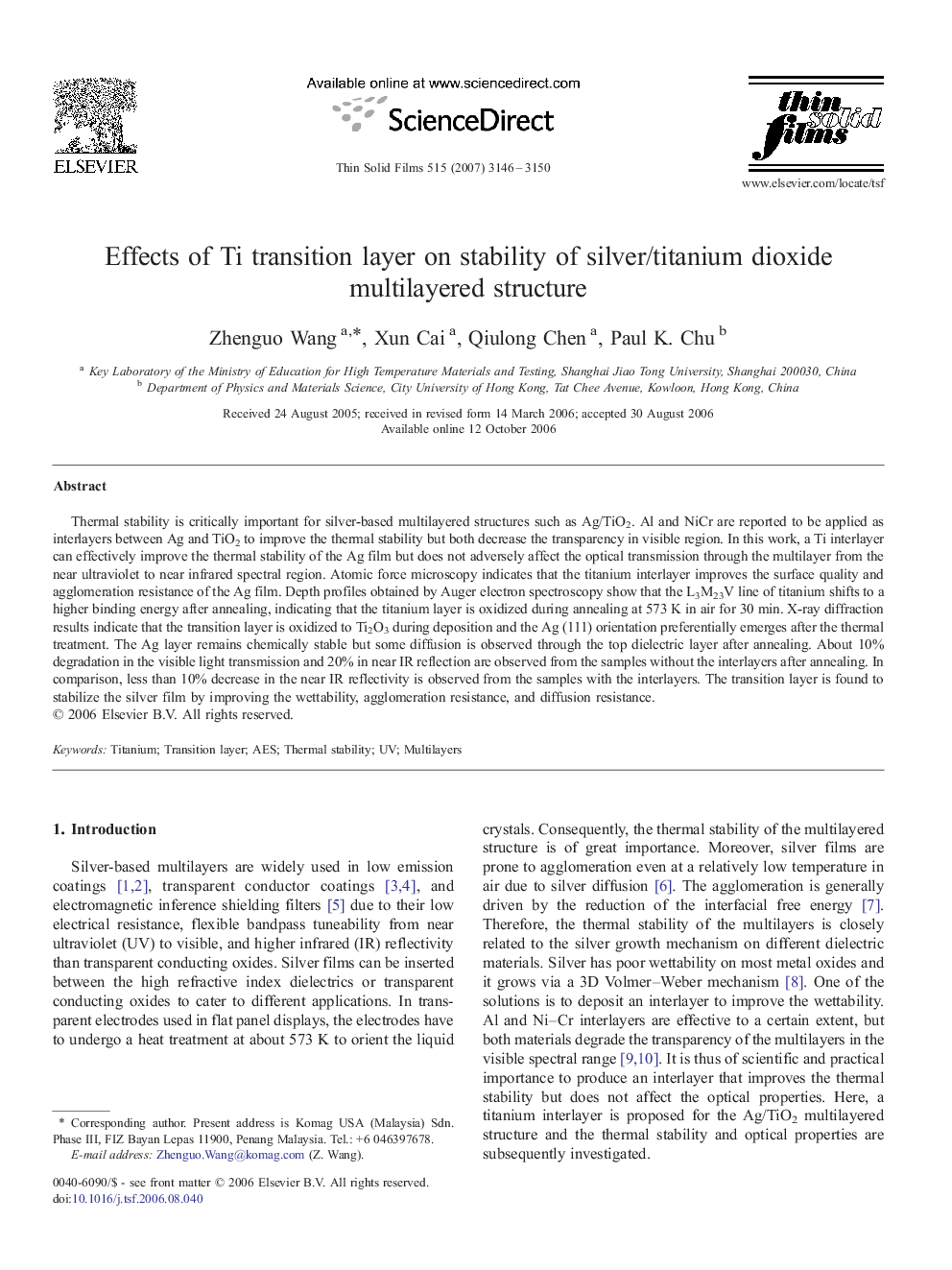| Article ID | Journal | Published Year | Pages | File Type |
|---|---|---|---|---|
| 1674737 | Thin Solid Films | 2007 | 5 Pages |
Thermal stability is critically important for silver-based multilayered structures such as Ag/TiO2. Al and NiCr are reported to be applied as interlayers between Ag and TiO2 to improve the thermal stability but both decrease the transparency in visible region. In this work, a Ti interlayer can effectively improve the thermal stability of the Ag film but does not adversely affect the optical transmission through the multilayer from the near ultraviolet to near infrared spectral region. Atomic force microscopy indicates that the titanium interlayer improves the surface quality and agglomeration resistance of the Ag film. Depth profiles obtained by Auger electron spectroscopy show that the L3M23V line of titanium shifts to a higher binding energy after annealing, indicating that the titanium layer is oxidized during annealing at 573 K in air for 30 min. X-ray diffraction results indicate that the transition layer is oxidized to Ti2O3 during deposition and the Ag (111) orientation preferentially emerges after the thermal treatment. The Ag layer remains chemically stable but some diffusion is observed through the top dielectric layer after annealing. About 10% degradation in the visible light transmission and 20% in near IR reflection are observed from the samples without the interlayers after annealing. In comparison, less than 10% decrease in the near IR reflectivity is observed from the samples with the interlayers. The transition layer is found to stabilize the silver film by improving the wettability, agglomeration resistance, and diffusion resistance.
